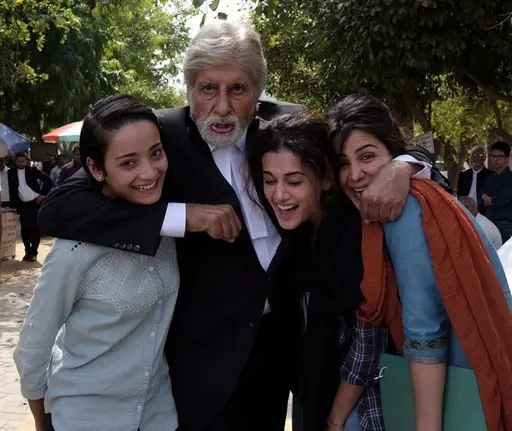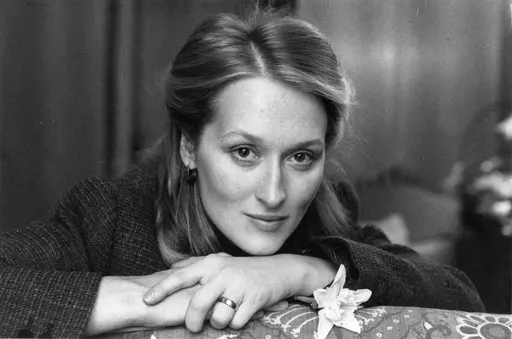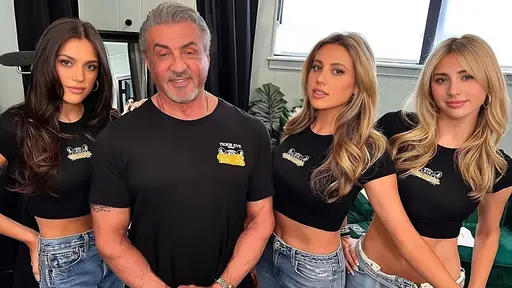Every successful actor has faced rejection. But some were dismissed so thoroughly at the start of their careers that success seemed impossible. These weren’t just small setbacks—they were full-on rejections, the kind that could break most people. But these five actors didn’t break. They pushed back, worked harder, and changed the game.
Here are five legends who went from “not good enough” to undeniable.
1. Amitabh Bachchan – Rejected for His Voice, Revered for His Presence

Before he became The Angry Young Man of Indian cinema, Amitabh Bachchan’s career almost ended before it started.
In the late 1960s and early 1970s, the Bollywood hero had a specific template: charming, fair-skinned, conventionally good-looking, and often with a flair for romance or light comedy. Amitabh didn’t fit the mold. He was tall — unusually so, standing at 6’2” — and carried a serious, brooding presence that directors weren’t sure how to place. He didn’t “look like a hero,” many said.
But the biggest blow came from what’s now one of his most celebrated features: his deep, commanding voice. All India Radio rejected him from a job as a radio announcer, claiming his baritone was “too heavy” and lacked mass appeal. Ironically, this same voice would later narrate some of India’s most iconic films, political documentaries, and national campaigns.
For years, Amitabh lived in the shadows of the industry. He did small, forgettable roles in films like Saat Hindustani (his debut) and Parwana, often barely noticed by the audience. Casting directors weren’t convinced. Some suggested he try supporting roles or stick to character parts. Despite being the son of renowned poet Harivansh Rai Bachchan, he had no industry backing and no insider advantage. He was, in many ways, an outsider trying to push through a closed system.
Then came Zanjeer. Director Prakash Mehra took a bold call by casting Amitabh in a role that required intensity, restraint, and inner fire — a sharp departure from the singing-dancing heroes of that era. The character of Inspector Vijay wasn’t meant to be romantic or playful. He was angry, disillusioned, and deeply human.
Zanjeer was a massive hit and marked the start of Bachchan’s legendary run through the 1970s and 1980s. It introduced a new kind of hero — one who didn’t woo with charm but roared with moral conviction. A hero who didn’t smile much, but who spoke volumes with silence. The “Angry Young Man” had arrived — and Bollywood would never be the same again.
Amitabh Bachchan went on to deliver back-to-back hits: Deewaar, Sholay, Don, Trishul, Muqaddar Ka Sikandar, and many more. His voice, once dismissed, became iconic — used in voice-overs, narrations, and poetic interludes. From the opening lines of Kabhi Kabhie to the storytelling in Lagaan and Jodhaa Akbar, his voice became a cinematic instrument of its own.
In a poetic twist of fate, he later hosted Kaun Banega Crorepati, the Indian version of Who Wants to Be a Millionaire, where his voice—calm, commanding, and full of gravitas—became the soul of the show. Millions tuned in every night just to hear him say, “Lock kiya jaaye?”
Beyond box office numbers, Amitabh became a cultural symbol — of resilience, reinvention, and quiet power. Even after a slump in the late ’90s and facing financial trouble with his company ABCL, he reinvented himself again in the 2000s, returning with acclaimed roles in Mohabbatein, Black, Paa, and Piku.
2. Meryl Streep – Called “Too Ugly” by a Producer, Became a Symbol of Talent

In the mid-1970s, a young Meryl Streep, fresh out of drama school and full of potential, walked into an audition for the 1976 remake of King Kong. This was her shot at a major film debut. But instead of being given a fair chance, she was met with a moment that could’ve crushed most aspiring actors.
Legend has it that producer Dino De Laurentiis took one look at her during the audition and, turning to his son in Italian, said, “Perché mi hai portato questa cosa brutta?” — “Why did you bring me this ugly woman?” He didn’t realize Meryl understood Italian.
She looked him straight in the eye and calmly responded — in fluent Italian — telling him she was sorry he felt that way. Then she walked out.
That moment could have ended her journey before it began. But Streep didn’t allow a producer’s shallow judgment to define her path. She wasn’t in it to win approval based on looks. She was in it to act — and act better than anyone else.
Later that year, she landed a small but impactful role in Julia (1977), acting alongside Jane Fonda and Vanessa Redgrave. Her performance caught the attention of directors and critics alike. The very next year, she delivered a stunning performance in The Deer Hunter (1978), which earned her the first of many Academy Award nominations. And from that point, there was no turning back.
Throughout her career, Meryl Streep broke every rule Hollywood tried to set for actresses. She wasn’t the ingénue, the bombshell, or the typical romantic lead. She played women with depth, complexity, and contradictions — real people. Whether it was Sophie in Sophie’s Choice, Miranda Priestly in The Devil Wears Prada, or Margaret Thatcher in The Iron Lady, she embodied her roles so completely that audiences forgot they were watching Meryl Streep at all.
Today, she holds the record for the most Academy Award nominations of any actor — over 20 — with three Oscar wins. She’s received the Presidential Medal of Freedom, a record-breaking number of Golden Globe nominations, and global recognition as the gold standard of acting.
3. Shah Rukh Khan – No Film Godfather, No “Hero” Look, Just Grit

In the early 1990s, Bollywood wasn’t exactly welcoming to outsiders. The industry was dominated by star kids, big film families, and a clear-cut idea of what a “hero” should look like — tall, fair, classically handsome, and preferably with industry connections. Shah Rukh Khan had none of that.
He was a Delhi boy with a wiry frame, a sharp nose, and hyperactive energy. He didn’t have the charm of a typical romantic hero — or at least, that’s what many producers and casting agents believed. He came from television, which at the time was seen as a step down from film. His background was middle-class, his parents had passed away young, and he had no lineage to lean on. In an industry where lineage often opened doors, SRK was knocking on them from the outside.
Early in his career, Shah Rukh was dismissed by some as “too unconventional.” Some even told him flat out that he wouldn’t survive in Bollywood — that he should stick to TV serials like Fauji or Circus, where he had already gained some visibility. Casting directors didn’t know where to place him. Was he a villain? A comic sidekick? Surely not a lead.
Instead of trying to fit into Bollywood’s hero mold, Shah Rukh shattered it. In a bold move, he took on roles no rising actor would usually touch — villains, obsessive lovers, morally grey anti-heroes. Baazigar (1993) saw him push a woman off a building. In Darr (1993), he stalked the heroine. In Anjaam (1994), he spiraled into darkness. And yet, audiences couldn’t look away.
He brought raw emotion, vulnerability, and electricity to every frame. Even as the bad guy, he was magnetic. That’s when Bollywood — and the audience — began to realize they were watching someone very different.
Then came DDLJ. Shah Rukh switched gears. As Raj, the charming NRI who wins over both girl and family, he redefined romance for an entire generation. He wasn’t macho or traditionally masculine. He was sensitive, goofy, respectful — and still irresistible.
DDLJ didn’t just launch him into superstardom; it became the longest-running film in Indian cinema history. And with it, SRK went from risky newcomer to full-blown superstar. SRK didn’t stop at acting. He built Red Chillies Entertainment, a successful production and VFX company. He became the co-owner of the Kolkata Knight Riders in the Indian Premier League. He took Indian cinema global, starring in international collaborations, TED Talks, and even earning honors from governments around the world.
After a brief career lull, many wrote him off again. And again, he came back swinging — with Pathaan (2023), Jawan (2023), and Dunki (2023), delivering three massive hits in one year and reasserting his dominance. Today, Shah Rukh Khan is one of the most recognized and beloved actors on the planet. He’s more than an actor — he’s a brand, a businessman, a philanthropist, and an inspiration. From earning ₹50 for his first acting gig to owning Mannat and ruling the box office, SRK’s rise is more than a success story — it’s a blueprint for ambition.
4. Sylvester Stallone – Rejected Over 1,000 Times, Bet on Himself

In the mid-1970s, Sylvester Stallone was at rock bottom. He was a struggling actor in New York City with just $100 to his name. He had been sleeping at bus stations, doing odd jobs, and even sold his dog — his closest companion — for $25 because he couldn’t afford to feed him.
Born with partial facial paralysis due to complications at birth, Stallone had a slurred speech pattern and an unusual mouth movement — features that casting agents saw as major red flags. He was rejected from role after role, often without a second look. Directors told him he’d never be a lead actor. Some suggested voice-over work might be his only shot — if that.
Broke, frustrated, and out of options, Stallone saw a boxing match between Muhammad Ali and Chuck Wepner. Inspired by Wepner’s underdog performance, he went home and wrote the screenplay for Rocky in just three days. It was raw, real, and personal — a story about a nobody with heart, grit, and just enough self-belief to take a shot. When he started shopping the script around, studios saw the potential immediately. They loved the story and wanted to buy it. Some offered as much as $350,000 — a life-changing sum for someone who could barely afford food.
Stallone refused. Over and over again. He turned down every offer unless he could play Rocky Balboa himself. He didn’t just want to sell a script. He wanted a shot — the same way his character did in the story. This wasn’t just a film to him. It was his story. Eventually, United Artists reluctantly agreed. They gave him a small budget of around $1 million (almost nothing by Hollywood standards), cast Stallone in the lead, and took the risk.
Rocky was released in 1976 — and it hit like a punch to the gut. The film was an instant success. It connected deeply with audiences because it was honest, emotional, and unapologetically about the underdog. Stallone’s raw performance wasn’t polished — it was powerful.
Rocky won three Academy Awards, including Best Picture. Stallone went from a broke actor to a household name overnight. He earned an Oscar nomination for Best Actor and Best Original Screenplay — a feat only matched by Charlie Chaplin and Orson Welles at the time.
Stallone didn’t stop there. He turned Rocky into a franchise, each film continuing the journey of a man who refused to quit — a character that mirrored his own life. He followed it up with Rambo, another franchise that made him a global action star, and later The Expendables, where he brought together action legends across generations.
Even decades later, Stallone kept evolving. His emotional return in Creed (2015), where he passed the torch to a new generation, earned him yet another Oscar nomination. His character had aged, but the heart — and the fight — remained. And remember the dog he had to sell? After Rocky’s success, Stallone tracked down the man who bought him and bought the dog back — for $15,000.
5. Nawazuddin Siddiqui – Too Dark, Too Poor, Too Real for Bollywood

Nawazuddin Siddiqui’s rise in Bollywood isn’t just a story of perseverance — it’s a story of breaking the industry’s deep-rooted biases, one role at a time. Born into a modest farming family in the village of Budhana, Uttar Pradesh, Nawazuddin’s early life was far removed from the glitz of cinema. He wasn’t raised around luxury, cameras, or red carpets. He spent his childhood surrounded by fields, poverty, and limited opportunities. But he dreamed big — and acting was his calling.
After graduating with a degree in chemistry and working briefly as a chemist in Baroda, Nawaz decided to pursue acting seriously. He joined the National School of Drama (NSD), India’s most prestigious acting institution. But even with NSD credentials, breaking into Bollywood wasn’t easy — especially for someone who looked like Nawaz.
When he arrived in Mumbai in the late ’90s, he faced a wall of prejudice. Casting directors dismissed him repeatedly. He was told, bluntly, that he was “too dark,” “not attractive,” and didn’t have a “hero face.” These weren’t whispered doubts — they were openly spoken judgments.
In an industry obsessed with fair skin, chiseled jawlines, and polished appearances, Nawazuddin was everything Bollywood traditionally ignored. He had no connections, no glamour, and no money. For over a decade, he scraped by with walk-on parts — a thief, a waiter, a passerby — characters who barely had a name, let alone screen time. He worked as a watchman to pay rent. He lived in cramped spaces with multiple roommates, often surviving on little more than vada pav and chai. Fame wasn’t even the goal then — survival was.
His first real break came with Anurag Kashyap’s Black Friday, a film based on the 1993 Bombay bomb blasts. Nawaz played a small but intense role — and suddenly, people noticed. He wasn’t trying to be flashy. He was just real. You couldn’t ignore him. Then came Gangs of Wasseypur (2012), where he played Faizal Khan — a complex, layered character that he carried with ruthless calm and inner fire. That performance flipped the industry on its head. Nawaz had arrived — and on his own terms.
From that point on, Nawazuddin challenged everything Bollywood had accepted for decades. He became the face of new-age Indian cinema — the kind that values depth over glamour. Films like The Lunchbox, Badlapur, Manjhi: The Mountain Man, Manto, and Sacred Games proved that he didn’t need a six-pack, designer wardrobe, or dance numbers to hold your attention. All he needed was the truth — and he brought it to every frame.
Today, Nawazuddin Siddiqui is one of the most respected actors in Indian cinema. He’s worked with the best directors, walked the Cannes red carpet multiple times, and blurred the line between art-house and commercial cinema. He represents every artist who has ever been told, “You don’t look the part.” He’s living proof that talent, authenticity, and relentless grit can break through even the most rigid systems.
